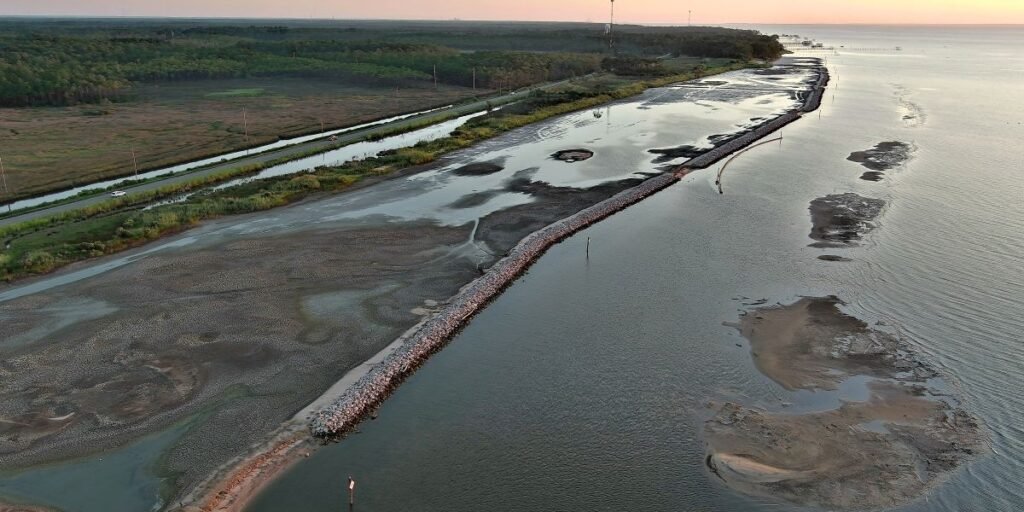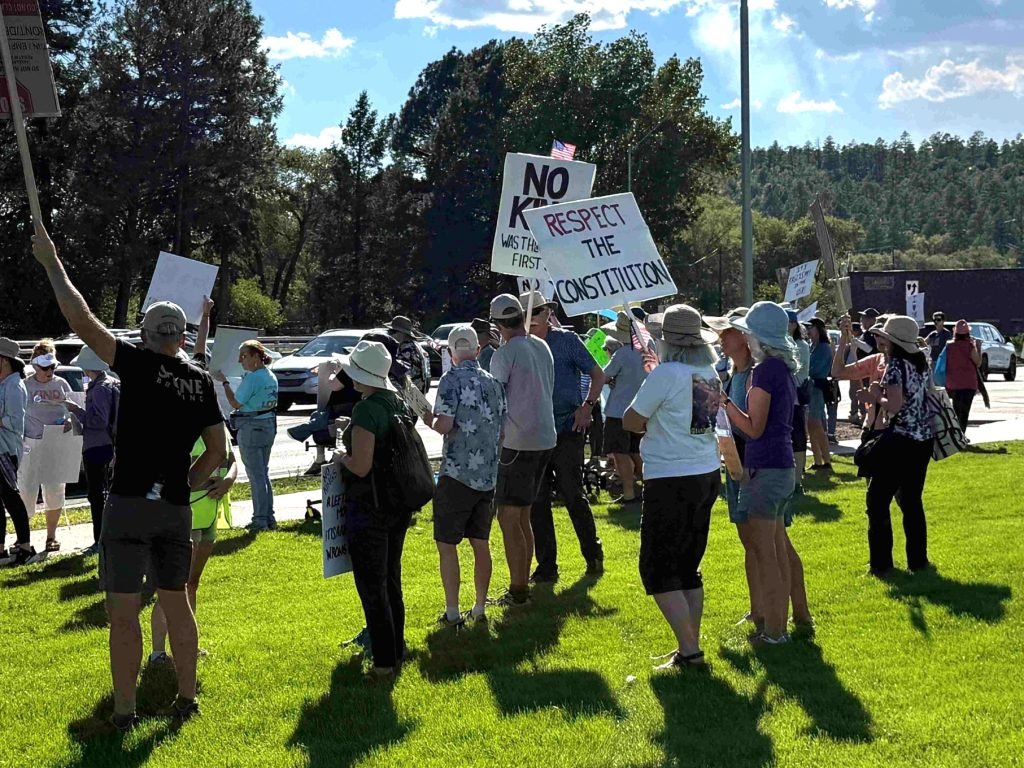Dauphin Island Causeway Restoration Project Progress
If you’ve visited Dauphin Island in the last couple of years, you might have noticed significant construction along the Causeway. There are rows of rocks, heavy machinery, and various work sites spread out over three miles on the eastern side.
The Dauphin Island Causeway Shoreline Restoration Project aims to enhance the strength and protection of the sole route from Dauphin Island to the Mobile County mainland, spanning three phases.
Phase 1 involved constructing segmented breakwaters with rocks along more than three miles of the Causeway, extending from Bayfront Park to Jemison’s Bait Shop and from the southern cutoff to Cedar Point.
In Phase 2, materials from ongoing work in the mobile ship channel are being utilized. They’ll be placed between the Causeway and the breakwater, and sand berms will be created to imitate natural habitats while enhancing containment.
Phase 3 will focus on planting native grasses and developing tide creeks once the wetland platform is set. The openings in the breakwater will facilitate tidal flow, serving as nursery habitats for various aquatic species. It may take about three to five years for the vegetation to fully establish.
A preliminary report from the US Army Corps of Engineers back in 2004 indicated vulnerabilities to tropical storms and hurricanes, highlighting the need for these protective measures due to frequent flooding and damage during storms.
Mobile County Environmental Services, along with the Alabama Department of Conservation and Natural Resources (ADCNR) and the Mobile Bay National Estuary Program, began the restoration efforts in 2018.
Tina Sanchez, Director of Environmental Services in Mobile County, noted that the community has recognized this issue for more than 20 years and has been collaborating to restore the local resources.
Work on the breakwater system commenced and was completed in 2024, following the National Fish and Wildlife Foundation’s approval of funding for the project. This system is designed to mitigate wave impacts while establishing a living wetland between the Causeway and the breakwater.
Sanchez emphasized the importance of utilizing dredged materials effectively. The Corps is employing material from the ship channel to restore approximately 100 acres of wetlands.
“This project wouldn’t be possible without strong partnerships and a beneficial use program for dredged materials, which we secured at just $1 per cubic yard,” she remarked.
The marsh habitat now extends to Cedar Point, except around Heron Bay cutoff, with the placement of dredged materials expected to wrap up by late autumn.
Sanchez also mentioned that this project serves as a significant example of an initiative that benefits both ecosystems and community resilience. Protecting the newly restored wetlands simultaneously safeguards roads leading in and out of Dauphin Island, as well as about 200-300 acres of marshland west of the Causeway.
Commissioner Chris Blankenship, a Dauphin Island native, expressed awareness of how crucial this project is, especially in adverse weather conditions.
“This is a major undertaking that has involved coordination among multiple agencies. It’s encouraging to see the progress when I visit the island. Each step forward offers a sense of achievement,” said Commissioner Blankenship.
Mayor Jeff Collier of Dauphin Island believes the Causeway Project will significantly benefit residents of the Barrier Island. “The project enhances our evacuation capabilities during tropical storms, giving us a bit more time. This is essential,” he stated.
Engineering firm Moffat & Nichol has been engaged in the project from the design phase. Meg Goecker, vice president and senior coastal scientist, mentioned the importance of considering various affected species throughout the restoration process.
“We had to be very cautious near public oyster reefs, ensuring that sediment was contained during construction,” Goecker explained. “The Corps was able to transport the dredged material effectively, ensuring it didn’t just end up in offshore disposal sites.”
Goecker expressed optimism about the potential for enhanced oyster production near the Causeway, noting it as a prime location for oysters due to the rock structures.
Funding for the $30 million project is sourced from the Deepwater Horizon Oil Spill Settlement and the NFWF Gulf Environmental Benefits Fund. Sanchez highlighted this as part of broader efforts to transform Southern Mobile County using oil spill dollars.
Overall, this initiative represents a significant investment in infrastructure meant to benefit residents, visitors, and the local ecosystem alike.







